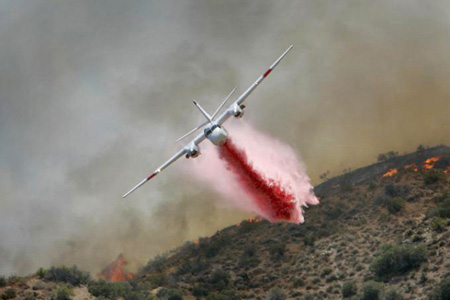
Last week I had the tremendous opportunity to travel to Wyoming and learn more about American Forests’ work in some of our western forests. The trip was eye-opening to the devastation caused by the mountain pine beetle and white pine blister rust. These two factors — along with the fire-suppression policy implemented by the U.S. Forest Service in the early 1900s — have played a major role in the current condition of forests in the West. Like many issues, there are very strong opinions on all sides of the fire debate, and it is not my role (nor my wish) to become enmeshed in the merits of one school of thought over another. Instead, over my next two posts, I am going to give you a look into how the current Forest Service fire policy came to be. It is a great example of decades of how changing views, science and, most importantly — at least for my role — law, all interact on one issue.
Now, as a history buff, the timeline of the Forest Service’s original fire-suppression policy alone is fascinating stuff. From smokejumpers to Smokey the Bear, it’s a gripping tale (if you haven’t clicked the link above, go on and click it!). The Forest History Society also gives a nice overview of the early policy complete with first-hand accounts of firefighting and black-and-white archival photographs. But even more interesting is how fire-suppression practices in the 1930s and 1940s shifted in the early 1970s to a more tolerant burn policy based on scientific advances, while still including suppression where and when appropriate. The burn policy was further altered and tightened in the wake of the 1988 Yellowstone fires, which burned hundreds of thousands of acres in and outside of the park. Science and experience are powerful drivers in the ever-shifting fire policy of the Forest Service.
The drive from Cody, Wyoming, to the East Gate of Yellowstone gives insight into yet another challenge faced when creating and adapting fire policy: human habitation. Throughout the Wapiti area and even into Shoshone National Forest, houses and businesses dot the landscape, providing an additional factor in firefighting procedures. Should homes be saved at all cost? Or does choosing to build in more-remote areas mean that your home is not a priority when fire does come? These questions have no easy answers, as the fluctuation in the Forest Service’s approach to fighting fires attests.

Additional voices from Washington, D.C., joined the fire-policy conversation in 2002 when President George W. Bush established the Healthy Forests Initiative (HFI). The HFI directed the Department of Agriculture (home of the Forest Service), the Department of Interior and the Council on Environmental Quality to streamline the regulatory process that accompanies fire-management policies. Streamline, regulatory, blah, blah— what does it mean?
Well, in the smallest nutshell I can find, there is a law called the National Environmental Policy Act (NEPA), which requires federal agencies to consider the impacts of any major federal action that may significantly affect the environment. To do this, agencies use either an environmental assessment (EA) or an environmental impact statement (EIS) to assess their actions. The HFI designated certain activities, such as hazardous-fuel reductions and rehabilitation actions on smaller acreages, to be excluded from the EA and EIS requirements. Simple regulatory changes, right? Well, not really. But that’s a story for next month. See you then.